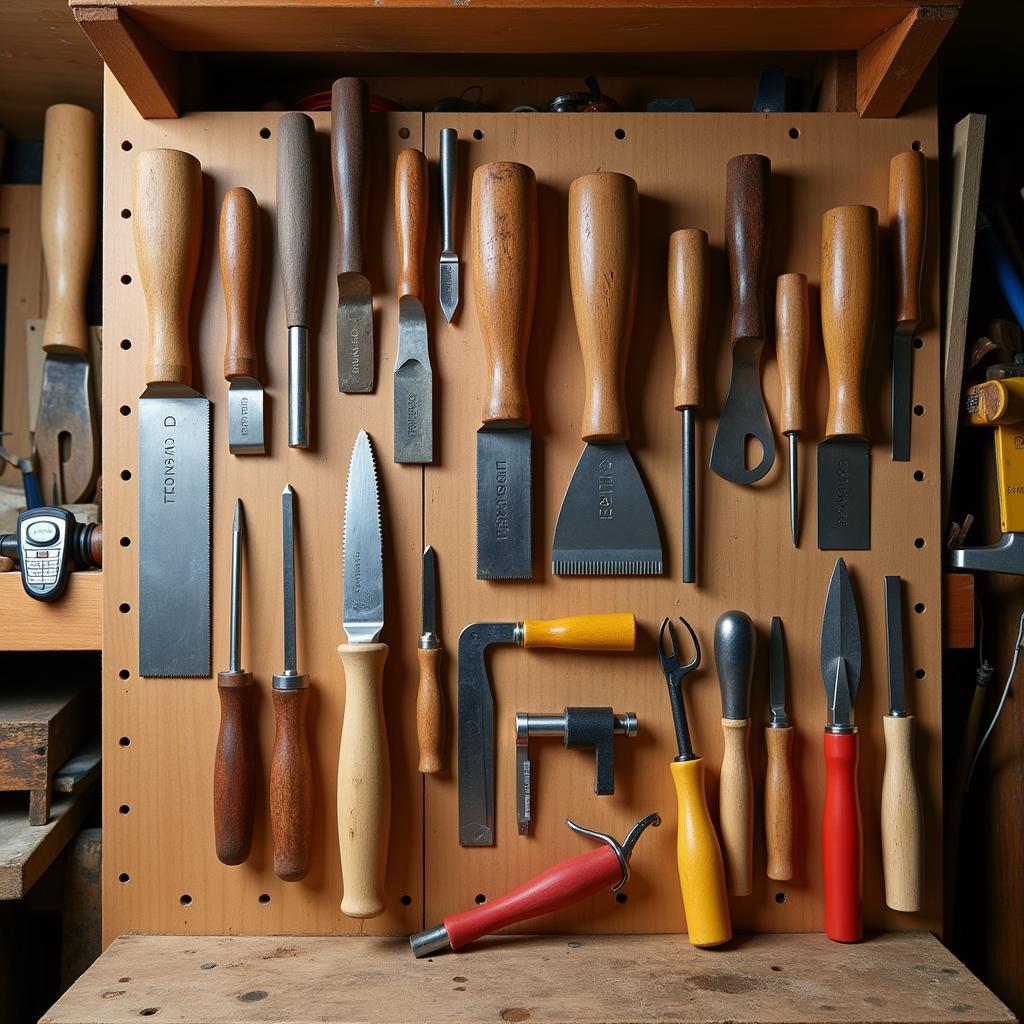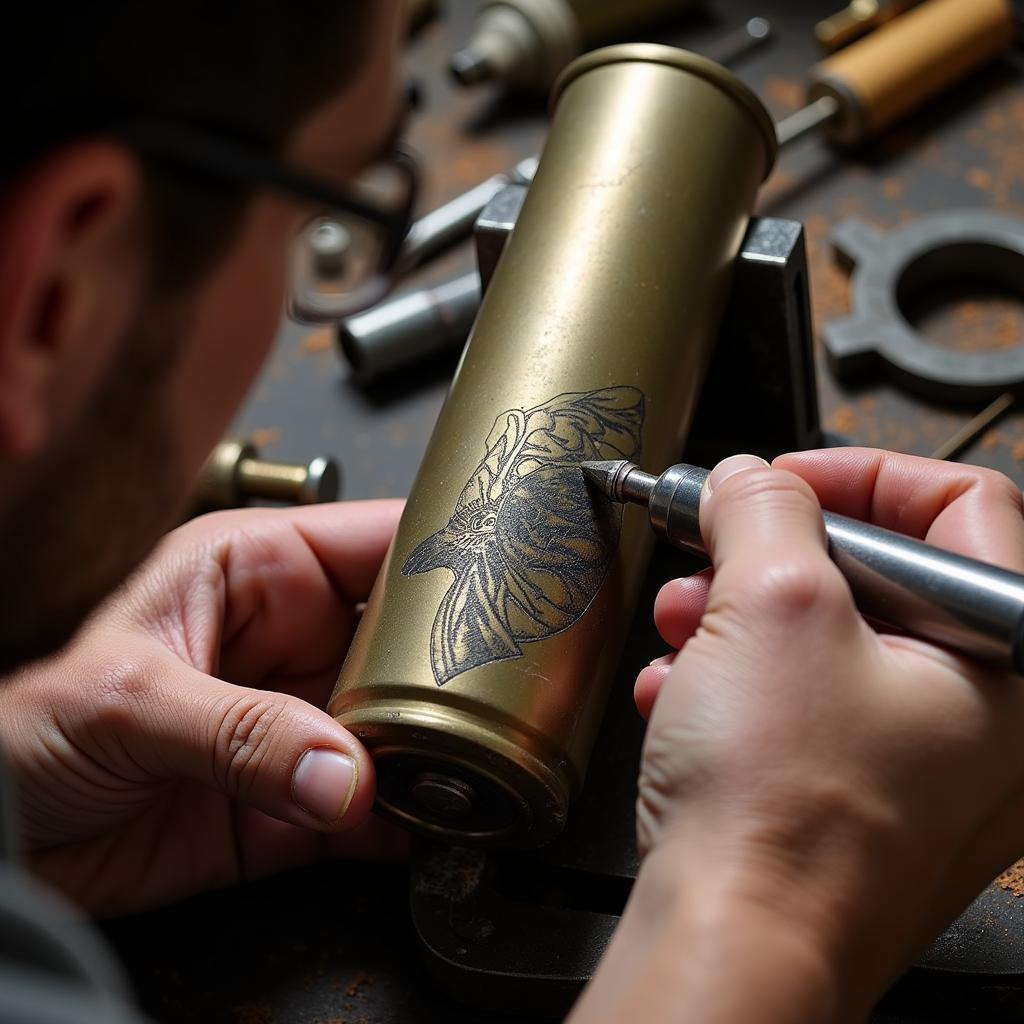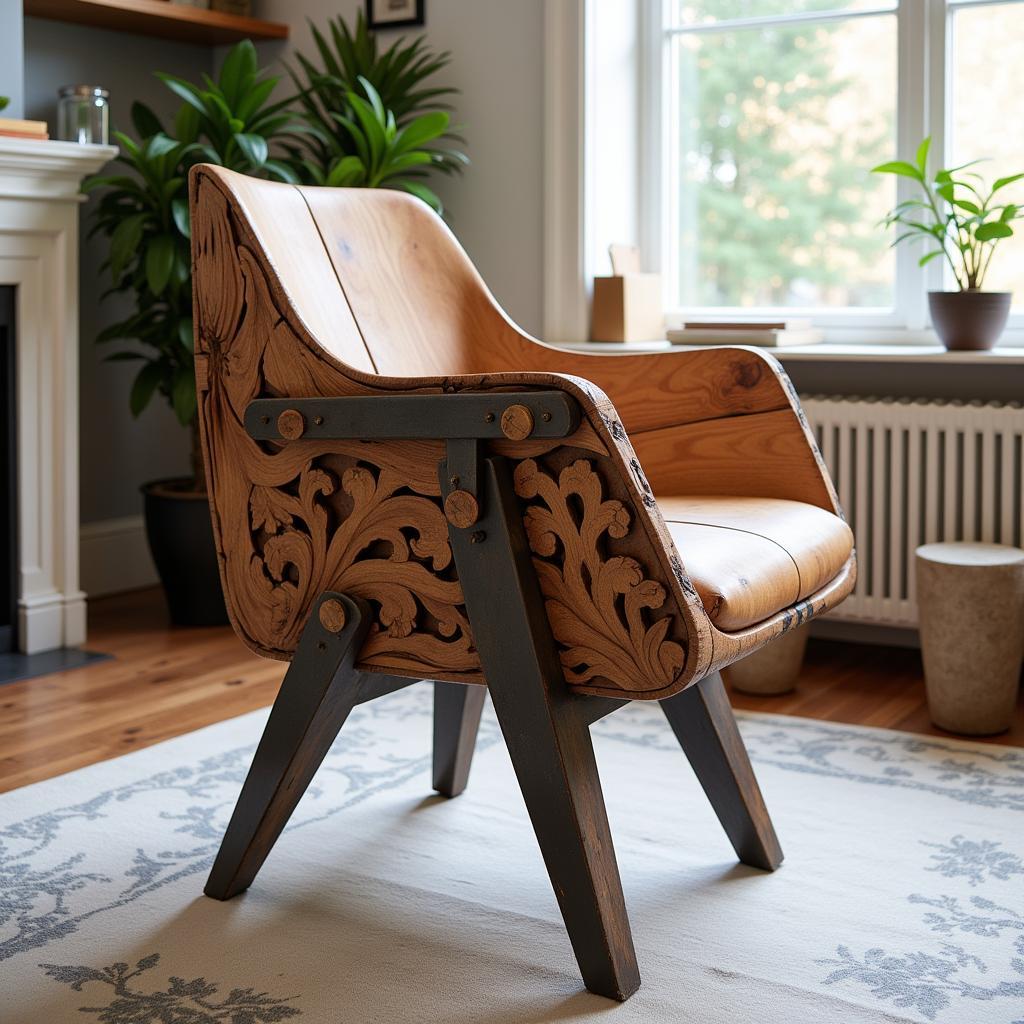Discovering the Beauty and Versatility of Wood Arts
Wood has been a staple material for artists and craftsmen for centuries, its natural beauty and versatility lending itself to a wide range of creative expressions. From intricate carvings and sculptures to functional furniture and decorative objects, Wood Arts encompass a diverse spectrum of techniques and styles.
A Rich History of Creativity
The history of wood arts dates back to ancient civilizations, with evidence of carved wooden objects found in archaeological sites around the world. From the totem poles of indigenous cultures to the ornate furniture of the Renaissance period, wood has played a pivotal role in artistic and cultural heritage. The arts crafts bench itself has witnessed generations of woodworking mastery.
Exploring Different Wood Art Forms
Wood art encompasses a multitude of disciplines, each with its unique characteristics and appeal:
1. Wood Carving: Transforming Wood into Art
Wood carving is perhaps the most well-known form of wood art. It involves using tools to shape and carve wood into three-dimensional forms. From intricate relief carvings to life-size sculptures, wood carving requires patience, precision, and a keen eye for detail.
2. Woodturning: Shaping Wood with a Lathe
Woodturning utilizes a lathe, a rotating machine, to create symmetrical objects such as bowls, vases, and furniture legs. The artist uses sharp tools to shape the wood as it spins, resulting in elegant and functional pieces.
3. Wood Marquetry: Creating Pictures with Wood
Wood marquetry is the art of assembling small pieces of wood veneer to create decorative patterns and images. This intricate technique requires meticulous planning and execution, resulting in stunning visual effects.
4. Wood Burning: Drawing with Heat
Wood burning, also known as pyrography, involves using a heated tool to burn designs onto the surface of wood. This versatile technique can be used to create a wide range of effects, from delicate line drawings to bold, graphic patterns.
Choosing the Right Wood for Your Project
The type of wood you choose for your project will depend on factors such as the desired look, durability, and workability.
- Hardwoods: Hardwoods like oak, maple, and cherry are known for their strength and durability, making them suitable for furniture, carving, and turning.
- Softwoods: Softwoods like pine, cedar, and redwood are generally lighter and easier to work with, making them suitable for carving, construction, and outdoor projects.
- Exotic Woods: Exotic woods come from tropical regions and are prized for their unique grain patterns and colors. They are often used for high-end furniture, decorative objects, and musical instruments.
Essential Tools for Woodworking
Whether you’re a beginner or an experienced woodworker, having the right tools is crucial for success:
- Saws: Used for cutting wood to size.
- Planes: Used to smooth and flatten wood surfaces.
- Chisels: Used for carving, shaping, and removing wood.
- Sandpaper: Used to smooth and refine wood surfaces.
- Clamps: Used to hold workpieces securely in place.
 Woodworking hand tools in a workshop
Woodworking hand tools in a workshop
Tips for Beginners
- Start Small: Begin with simple projects to learn basic techniques before tackling more challenging pieces.
- Take a Class: Enrolling in a woodworking class can provide valuable guidance and hands-on experience. Consider attending the Claremont Arts and Crafts Festival to immerse yourself in a creative environment.
- Practice Patience: Woodworking takes time and patience. Don’t get discouraged if your first attempts aren’t perfect.
- Safety First: Always wear appropriate safety gear, such as eye protection, dust masks, and gloves.
“Woodworking is a journey of discovery,” says renowned wood sculptor, Johnathan Miller. “Each piece of wood has its own unique character, and the artist’s role is to unveil its hidden beauty.”
Conclusion
Wood arts offer a captivating blend of creativity, skill, and tradition. Whether you’re drawn to the intricate details of carving or the elegant simplicity of turned objects, there’s a world of possibilities to explore. Embrace the natural beauty of wood and embark on your own woodworking journey.
FAQ
Q: What are the best woods for beginners?
A: Pine and fir are great choices for beginners as they are softwoods and easier to work with.
Q: What are some essential safety tips for woodworking?
A: Always wear eye protection, use sharp tools, and work in a well-ventilated area.
Q: Where can I find woodworking classes near me?
A: Check local community centers, craft stores, and online resources for woodworking classes. You might even find martial arts classes at Martial Arts Lynnwood WA that incorporate woodworking elements.
Q: What are some resources for finding woodworking project ideas?
A: Books, magazines, websites, and social media platforms dedicated to woodworking offer a wealth of inspiration.
Q: Can I sell my woodworking projects?
A: Yes, you can sell your woodworking projects online, at craft fairs, or through local consignment shops.





